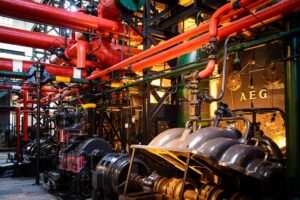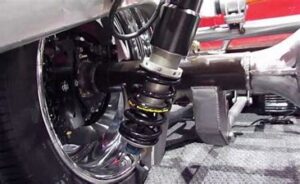Ever heard an odd sloshing sound coming from inside your automobile while you were driving? It can be quite annoying and is similar to water moving about. You’re not alone in this, though; many car owners have gone through this. The good news is that you usually don’t need to go to the mechanic to fix it. This article will look at what makes your car generate that annoying sloshing sound and how to get rid of it.
We’ll go over typical causes of the sound, such as blocked drainage systems and air bubbles in your coolant and offer easy fixes that anyone can implement. So, if you’re tired of that annoying noise. Keep reading this article to learn how to fix sloshing sound in car. Additionally. to enjoy a more peaceful drive.
Table of Contents
What Does A Sloshing Sound Mean?
When you hear fluids sloshing around within your car, the car is moving. It sounds similar to the noise made when you shake a water bottle. Sometimes it can be annoying to hear this noise, which typically occurs when driving. It occurs when fluids inside your car, such as water, coolant, or gasoline, begin to move as you speed, brake, or turn.

Something may not be right if there is a sloshing noise. Air bubbles in the coolant, clogged drainage channels, or even petrol sloshing around in the gas tank can all contribute to this problem. Even though it’s typically not a big deal, it’s still important to identify the cause and address the issue because it may occasionally be a symptom of more serious problems with your car’s systems.
Explain The Causes Of Sloshing Sound In Your Car
Let’s first examine why the sloshing sound occurs before moving on towards how to fix sloshing sound in car. This irritation has several typical causes:
1. Drainage System Clogged:
A congested drainage system is one of the most frequent causes of sloshing noises. Rain and other liquids are directed away from delicate places by the architecture of your car. Water can build up and produce sloshing noises if these drainage passages get clogged with debris.
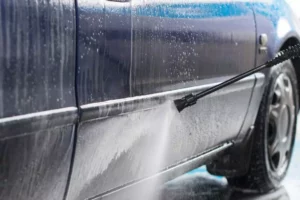
2. Coolant With Air Bubbles:
Air bubbles could occasionally become entrapped in the coolant system of your car. These bubbles can make a sloshing sound as they move through the system. This could be a sign of a leak or that the coolant system needs to be bled.
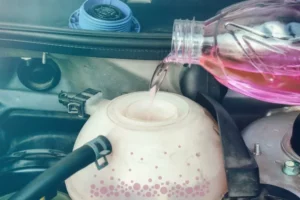
3. Fuel Tank Problems:
It may be related to your gas tank if you hear sloshing noises coming from below your automobile. Fuel within a gas tank that is either empty or only partially filled might splash around and make noises.

4. Doors With Water:
Some automobiles have hollow doors, and rainwater can build up inside them if the drainage passages inside them are obstructed. This water may swirl about inside the doors as you drive, producing an audible sound.

5. Drainage From Air Conditioning:
Condensation produced by your car’s air conditioning system is typically drained away. Water might accumulate and produce sloshing noises if the drainage tube is blocked or broken.

How To Fix Sloshing Sound In Car?
It can be inconvenient when your automobile makes a sloshing noise, but you can usually fix it yourself. This sound is made as fluids in your car, such as petrol, water, or coolant, move around while you drive. Follow these measures to put an end to the irritation:
1. Determine The Source:
Initially, make an effort to locate the source of the sloshing sound. It could be under the vehicle, inside the doors, or next to the dashboard. Finding the best answer requires understanding the problem’s origin.

2. Verify The Drainage For Clogging:
Drainage channels that are clogged are the source of many sloshing noises. On the sunroof, under the car, and around the bottom of the doors, look for openings. Clear the obstructions from these channels with a flexible wire or a pipe cleaner.
3. Addressing Coolant Air Bubbles:
Park your car in a flat place and let the engine cool down if you think there may be air bubbles in the coolant system. Start the engine, carefully remove the radiator cap, and add more coolant as necessary. Release any trapped air bubbles by applying pressure to the upper radiator pipe until none remain inside the radiator.
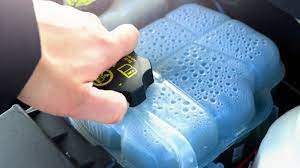
4. Control Gas Tank Problems:
If your gas tank is making a sloshing noise, attempt to maintain it about halfway filled to reduce fuel movement. You might have to put up with the noise until you can refuel if that isn’t possible.
5. Resolve Water In The Doors:
Find the drain holes at the bottom of the door frame to check for water that has become trapped inside the doors. Use a pipe cleaner or wire to remove any debris. To guarantee proper drainage, dispense a small amount of water into the door frame.
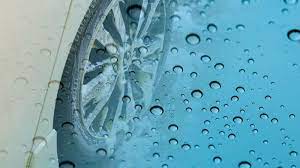
6. Examination Of Air Conditioning Drainage:
Locate the drainage tube under the car, close to the passenger-side firewall, to see if the noise is related to your air conditioning system. Use a wire or pipe cleaner to get it out, then inspect it for damage to the tube and replace it if required.
Keep in mind that following these easy procedures will stop most sloshing noises. To maintain your car operating smoothly and silently, it’s best to seek professional guidance if you’re ever unsure of how to fix sloshing sound in car.
When To Seek Professional Advice?
While many sloshing sound problems may be fixed by do-it-yourselfers, there are several situations where you should seek expert help:
1. Continuous Sloshing:
If you try to fix the sloshing sound but it keeps happening, there might be a bigger problem going on. Ask a mechanic to help you locate and resolve the issue.

2. Leaking Coolant:
It’s crucial to have a professional inspect and fix the problem if you suspect that air bubbles in the coolant system are responsible for the sloshing sound and you observe a coolant leak.

3. Fuel Tank Issues:
Seek quick professional assistance if your gas tank area is making sloshing noises and there are accompanying fuel aromas or obvious fuel leaks because this could be a safety threat.
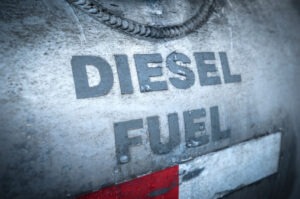
4. Issues With Complex Air Conditioning:
It is preferable to have a professional diagnose and fix the issue if you feel the sloshing sound is connected to your air conditioning system and it requires more than a basic drainage tube cleaning.
Conclusion:
Now that you’re well aware of how to fix sloshing sound in car. Remember, you can frequently fix the issue yourself. There are actions you can take to address the problem and enjoy a quieter ride, whether it involves clogged drainage channels, air bubbles in your coolant system, gas tank troubles, water in your doors, or air conditioning drainage problems.
However, it’s essential to seek the advice of a qualified mechanic for a comprehensive check and repair if the issue persists or is connected to leaks or safety concerns. Don’t allow that sloshing sound to drive you crazy—a quieter car is more pleasurable!

